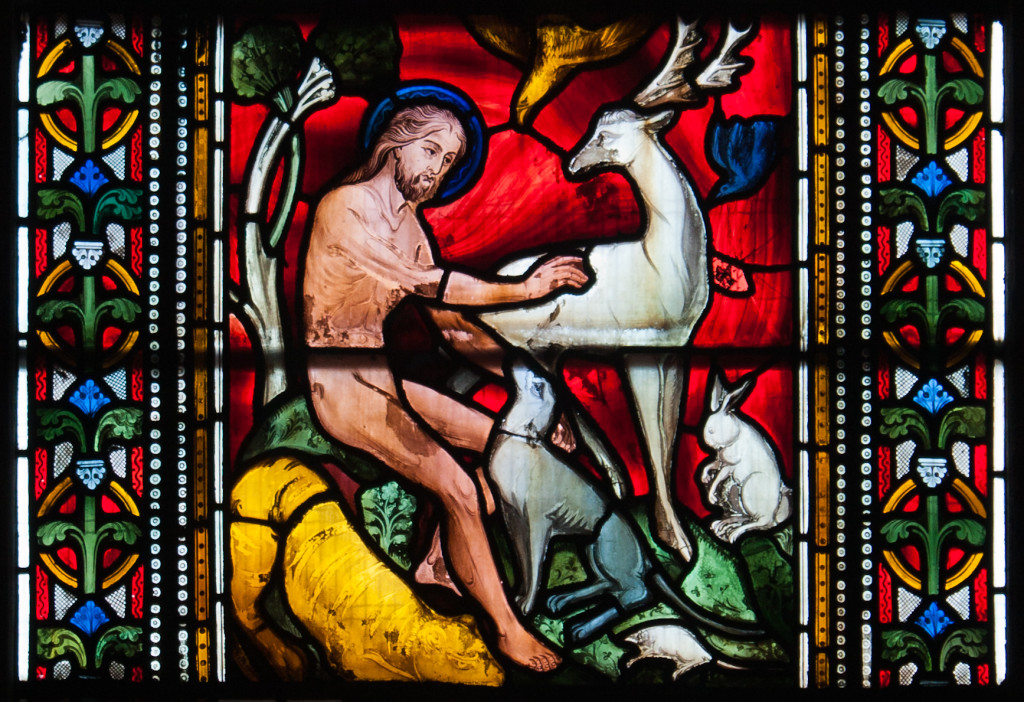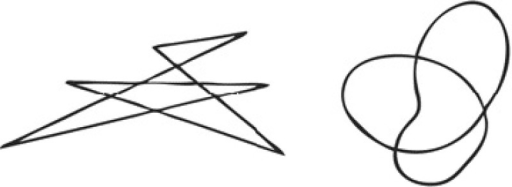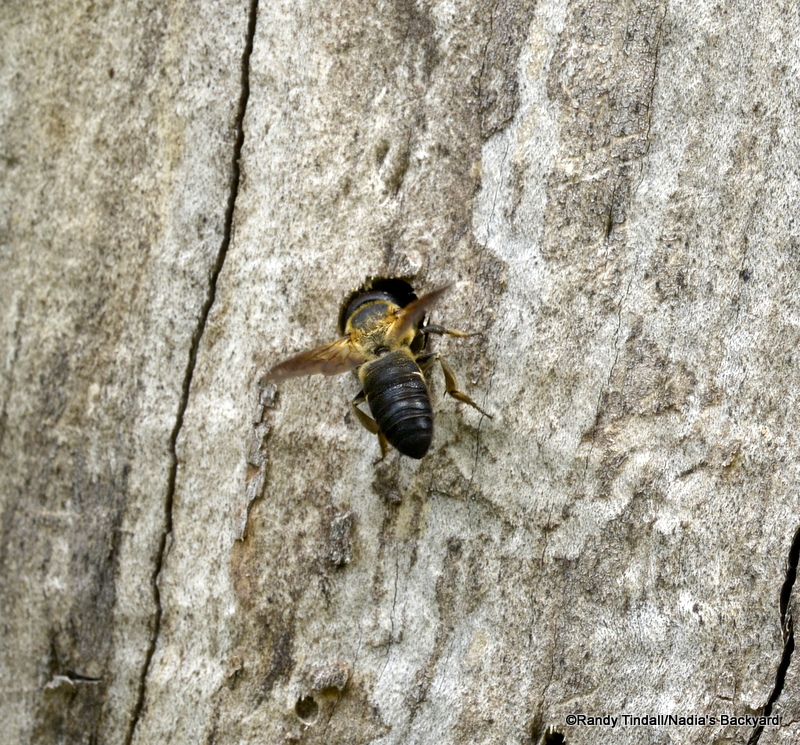We have never had a seagull in our backyard, at least to my knowledge. So let me be clear up front that if you are expecting a heartwarming tale of an errant seabird squawking its way into Nadia’s heart or mine, you will be disappointed and probably wondering why someone would call an article “A Seagull Named Emma” and then not bother to put a seagull in it. Well, we’ll get to that.
Instead, let’s talk about names and naming, because I seem to spend an incredible amount of time trying to do that for the things we find in our little urban wilderness. During photogenic times of the year, we might take hundreds of photographs a week out there. That’s the fun part. What is sometimes less fun, and occasionally frustrating, is trying to put names to what we see, even though tools abound to help with this, from nature guidebooks, to invaluable websites with interactive identification tools, to myriads of phone apps to carry with you in the field (or yard), to friends smarter than me.
I started to wonder why this was so important. I mean, it seems obvious that we would want to know what it is we are observing, right? But must we be so obsessive about it? I recall a conversation with friends years ago about local grasses, and someone pointed out some attractive specimens nearby. “Indiangrass”, she said, to which someone replied, “Sorghastrum nutans?” At that point, someone else snorted and exclaimed “Ah, you people drive me nuts when you do that!”.
His point, as I understood it, was why not just appreciate what we’re seeing and experiencing, without trying to label it and stuff it into a dusty mental museum case? Fair enough.
But that is much, much harder than it sounds. In fact some folks spend years, even lifetimes, in intensive training in how to experience the universe directly without filters and overcome their tendencies to name and categorize. The rest of us spend years, even lifetimes, learning how to name things. In fact, this is the training that starts before any other.
When we first pop into the world we are probably as close to pure non-intellectual experience as we are ever likely to get. My memories are a little foggy from those days, but I expect that the feeling we later name “wonder” is routine for some time after first taking breath. Then along come these warm patterns of sight, sound and feeling called “parents” and the first thing they do is start telling us what things are called.
Well, actually, that’s not the first thing they do. The first thing they do is to name us, and then they start by telling us what our own names are and that we should call them “papa” or “mama”. At this point, all this is just vibrations traveling through air impacting our delicate newborn eardrums, but soon the damage is done. Meaning arrives on the wings of sound and sight, and the slippery slope of categorization has begun. Soon we’re perched on Mama’s and Papa’s laps looking at books with pictures of dogs, cows and birds. Pretty soon after that, we’re expected to know this stuff cold and show it off for Mama’s and Papa’s friends.
How could it be otherwise? How else could we survive without constant care from Those Who Name? How else to know what to eat, what to run away from, how to communicate anything at all to others, who those others are and how they relate to us? I mean, naming stuff was one of the first tasks Adam was given, back in the day! There was a reason for that.

Adam naming the animals. Photo of stained glass in Dublin Christ Church Cathedral by Andreas F. Borchert
I said that it seems a no-brainer that we want to know what we are observing. That “what” entails knowledge about the properties of the observed thing and how those properties potentially affect us, an amount of knowledge that can be encyclopedic for any given item we confront. We abbreviate all that with names, shorthand for volumes of information about what those names represent. When someone says “Indiangrass”, I get a mental picture of a type of grass, what it looks like and where it grows, and when someone says “Sorghastrum nutans”, I’m pretty sure that she and I are talking about exactly the same grass, avoiding much confusion. For most people, I think it’s fair to say, the “what” of an object is its name, as in:
“What is that?”
“That is a bug.”
“Ah!”
(Along these lines, in an historical aside, there is a group of Christians known as the “Name Worshippers” who believe that the name of God is the same as God himself. This got some influential folks so worked up that once upon a time an archbishop backed by a small Russian naval fleet with armed troops invaded a monastery on Mount Athos in Greece, beating and imprisoning some name-worshipping monks. But since this article is not about Greek monks, any more than it is about seagulls, I won’t mention this again. Sorry.)
It is not just a staple of fantasy and folklore to assert that naming things gives us power over them (even dragons!). Like the wizard Sparrowhawk in Ursula K. LeGuin’s famous Earthsea Trilogy, we spend many years in our towers learning the names of the things in our lives, because knowing these names allows us to understand them, manipulate them and communicate with others about them. It even helps us get at things that we don’t know the names of, because we can use names we know to describe things we don’t know in ways that help us put names to them, too.
“What kind of bug is that?”
“I don’t know. But it kind of looks like a stink bug.”
“Ah! I’ll get my book and see if I can find one that looks like that!”
Then there are names that give us some information about things, even if we know nothing else about them. Can you spell “onomatopoeia“? (I couldn’t, but my computer’s auto-complete could.) Onomatopoeias are words which “sound like” the things they describe, and these words abound. We all know some and it’s not hard to imagine that describing things by imitating the sounds they make may be one of the origins of human language. If I think of a “whip-poor-will” it brings back the sounds of that bird calling during night-time fishing expeditions in deep Southern Illinois. Or my favorite, “njinga” (pronounced like enjinga), the word for bicycle in the Bantu language of Chichewa. Does a bike make a sound like that? Sure does if its got a warning bell on the handlebars! Later, as motorbikes became more popular, this was modified to include “njinga ya moto”. See how it works? An existing name was used to lever a new thing into a category that could be put on people’s mental maps. Genus: Njinga. Species: ya moto.
Finally, some names just fit, even if it’s hard to say why. Psychologist Wolfgang Köhler made up two names, “takete” and “maluma”, then showed people two drawings, one spiky and angular figure and the other rounded and curvy. Then he asked them to decide which name went with which figure.
Overwhelmingly, and I bet you’re not surprised, subjects chose takete for the angular figure and maluma for the curvy one. This is called the “Bouba/Kiki Effect” (you heard it here first, folks) and basically says that somewhere down in our wiring we can consistently map types of sounds to categories of shapes. This may be yet another clue to origins of human speech. Some things just sound right.
Which brings me finally to Emma the Seagull. The German poet Christian Morgenstern wrote that, “The seagulls by their looks suggest that Emma is their name…” (This was also translated as, “All seagulls look as though their name was Emma”.) I mean, come on. Now that you’ve read this, will you ever be able to see another seagull without thinking “There goes Emma!”? It just fits.
Why? Who knows? In fact, maybe to you it doesn’t, but it did to me.
All of this seems trivial at first read, but the more I think these things over, the more they seem to be about the bedrock, scaffolding and framework of our conscious experience in the world. Trying to imagine living in a world without using names is a near-impossible task. Trying to imagine oneself being nameless is frightening. Both of these conditions would seem to take us back to newborn status or maybe into the state of Zen consciousness that monks spend years and decades trying to capture through meditation. Direct experience. Things as they are, without the baggage carried by labels.
At any rate, when I spend hours going through Bugguide.net trying to decide if the bee in my pictures is a Megachile mendica or M. brevis (see the last two postings), I am trying to discover the essence of that bee. Knowing the name opens doors to all kinds of published information about that particular bee. It lets me talk about it unambiguously with colleagues. It gives me a certain level of acquaintance with the next one I see in our backyard.
It gives me a little control over that part of my world.
And that sounds right.



Thought-provoking. Yes, the balance of naming and knowing vs. simply admiring and appreciating. The name is all-important to interacting and comparing information with others. Yet, there are times when it’s helpful to turn it all off, sit back in a folding chair, and take it all in with a glass of iced tea and a pair of binoculars.
Yes, agreed. Iced tea and binoculars. Easy Zen. I like it!